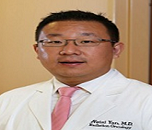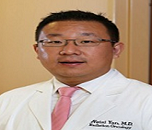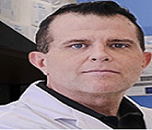Conference Schedule
Day1: July 23, 2018
Keynote Forum
Kenji Ohe,
PhD at Kyushu University, Japan
Title: Title: From understanding the molecular mechanism of aberrant ERα pre-mRNA toward the therapeutic application in breast cancer
09:30-10:10
Biography
Abstract
HMGA1a (formerly termed HMGI) is known as a DNA-binding transcription factor with oncogenic properties. We have reported that it also binds to RNA in a sequence-specific manner. HMGA1a anchors U1 snRNP to the 5’ splice site of presenilin-2 exon 5 to induce its aberrant exon skipping only when the HMGA1a RNA-binding site is adjacent to the 5’ splice site in sporadic Alzheimer’s disease. In order to seek for other target genes of HMGA1a, we were prompted to search for HMGA1a RNA-binding sites in the estrogen receptor alpha (ERα) gene where both have been extensively studied in breast cancer. We performed a sequence homology search for the presenilin-2 (PS2) HMGA1a RNA-binding site and found a specific sequence 33-nt upstream of the 5’ splice site of ERα exon 1. Therefore, we examined; (i) HMGA1abinding to the RNA sequence by RNA-EMSA, (ii) splicing activity in cultured MCF-7 cells that were transfected with HMGA1a-expression and its RNA decoy expression plasmids, (iii) splicing activity in vitro. We found it switched two alternatively spliced isoforms, ERα66 and ERα46. HMGA1a-mediated U1 snRNP anchoring to the adjacent pseudo-5’ splice site was checked by psoralen-mediated UV crosslinking combined with RNA-EMSA. The effect of the decoy oligonucleotides containing the PS2 HMGA1a RNA-binding site in MCF-7 cells was further checked by transplanting its stable transfectant in nude mice showing increased estrogen-dependent growth. However, in tamoxifen-resistant MCF-7 TAMR1 cells, the HMGA1a RNA-binding decoy oligonucleotides improved tamoxifen-responsiveness by inhibiting estrogendependent cell proliferation. We conclude that this HMGA1a RNA-binding decoy oligonucleotides would be implicated in novel therapeutic application to improve tamoxifen effectiveness in breast cancer where tamoxifen lack effect.
Weisi Yan
University of South Alabama
Title: The application of lattice therapy in clinical radiation oncology
10:10-10:50
Biography
Abstract
11:10-11:50
Biography
Abstract
Donglu Shi,
University of Massachusetts
Title: Detection of circulating tumor cells by electrically-charged magnetic nanoprobes
11:50-12:30
Biography
Donglu Shi is currently the Chair of the Materials Science and Engineering Program at the University of Cincinnati. He received his PhD in Engineering from the University of Massachusetts, Amherst. He was the Staff Scientist in the Materials Science Division of Argonne National Laboratory between 1988 and 1995. He has so far published 270 refereed SCI journal publications including Physical Review Letters, Nature, ACS Nano, and Advanced Materials. His main interests include Nanostructure Design, Nano Biomedicine, Nanophotonics, and Magnetism. The most recent works pioneer several novel approaches in developing multifunctional nano carrier systems for early cancer diagnosis and therapy.
Abstract
Precision medicine has gained wide attention in various disciplines such as oncology. Selection of drugs and patients is imperative to cope with increasing complexity and costs of new systemic treatments. Almost all these advances are based on molecular biology of the target lesion. High quality tissues meaning enough, pure and fresh are prerequisite for these expensive and complex medical innovations. Often, the biopsy step is the bottleneck because of concerns for patient discomfort, morbidity/mortality, and poor tissue quality. While surgery is expensive and cumbersome, tru-cut technologies are inappropriate also because of the relatively small size and the heterogeneity of samples. New macrobiopsy technology can provide samples with sufficient quality in a comfortable out-patient setting. Recently, new progress has been made for biopsy in the most delicate areas of the human body. This study collected cases of patients that were seen in six clinical departments on admission for lesions that were inaccessible for other percutaneous tissue acquisition methods in areas such as head and neck, thorax, liver, intra-abdominal, retroperitoneal, and intrapelvic sites. The biopsy was taken by Spirotome of sizes between 14 and 8 G. The procedure was considered successful if the patient had no side effects and the size of the sample was sufficient for all prospected histological and biomolecular tests. The end-point of this non-randomized study was to detect locations where a macrobiopsy could not be taken. For all areas, considered to be delicate for tissue acquisition, at least one successful procedure was possible. In almost all cases, the procedure could be considered successful. Tips and tricks will be presented. With the appropriate tools for imaging and biopsy, high quality tissue samples can be obtained from all body parts, even the most delicate, providing access to precision medicine for every patient.pturing and sensitive detection in clinical settings.
Tracks
- Cancer Research & Cancer vaccines | Biomarker and drug targeting | Clinical Radiational Oncology | Cancer Biology | Immuno Oncology studies
Location: Amsterdam, Netherlands
DONGLU SHI
University of Cincinnati, USA
Chair
WEISI YAN
University of South Alabama, USA
Co Chair
Maria del Rosario Davalos Gamboa
PhD in the Pontifical University San Francisco Xavier of Chuquisaca.
Title: Immune system, food and infectious diseases in a focal sample of children and adolescents with cancer in Cochabamba, Bolivia
13:30-14:00
Biography
Maria Del Rosario Dávalos Gamboa has completed her Pharmaceutical Biochemistry degree from the University Of San Simon Bolivia. She has obtained her PhD in the Pontifical University San Francisco Xavier of Chuquisaca. She has more than 15 scientific articles published in prestigious Journals. She was the Director of the Research Institute of the Faculty of Dentistry UMSS, she won a competency exam at the Faculty of Dentistry UMSS in the Chair of Biochemistry and currently, she is Titular professor of Biochemistry in the same faculty.
Abstract
Objective: To determine the influence of the immune system, food and infectious diseases, for the development of cancer in a focal sample of children and adolescents who usually attend the Manuel Ascencio Villarroel Children's Hospital in the Cochabamba region (Bolivia).
Methods: Cross-sectional study conducted in January and February 2016 in children and adolescents who regularly attend the Manuel Ascencio Villarroel child's Hospital, between the ages of 2 months and 16 years (n = 45) of the Cochabamba region (Bolivia). The parents and / or guardians of the participants were surveyed for a descriptive analysis.
Results: They had two or more signs and symptoms (low immunity) by the weakened immune system 86.67%. They were usually affected by, virus and influenza 51.11%, with muscular pain and constant joints 44.44%, watery eyes and nose running in 35.55%, persistent headache in 40%, they got tired a lot and fatigued despite of rest 35.56%, 31.11% were regularly ill, had a delay in recovering from diseases 28.88%, exhibited a fixed pattern of disease 28.88%, fought endlessly with the disease 24.44%. In the type of food those who consumed natural products before their diagnosis of cancer, 41.66% the use of natural carbohydrates, 61.11% natural protein, 61.11% natural fats, 63.88% of natural fruits, 55 % natural fibers, 27.77% drank a lot of water. In the type of inadequate food that they consumed before their diagnosis of cancer, 33.33% cured meats, 75% soft drinks, 83.3% refined sugar, junk food and refined flour. No statistically significant differences were detected in the influence of infectious diseases.
Conclusions: In the study it was determined that for the development of cancer in children and adolescents of the focal sample, both their weakened immune system and their diet influenced them, although their diet was varied with natural products, usually they consumed sodas, refined sugar, white flour and junk food, foods that are related to the origin of cancer.
Dina Ron
PhD from Ben-Gurion University
Title: Therapeutic ultrasound-mediated delivery of the gene encoding for the tumor suppressor, Sef,
14:00-14:30
Biography
Dina Ron has completed her PhD from Ben-Gurion University and Postdoctoral studies from the National Cancer Institute, NIH, USA. She is a Lab Chief in the Biology Department, the Israel Institute of Technology. She has published more than 60 papers in Refereed professional journals and served as an Editorial Board Member of the Journal of Biological Chemistry.
Abstract
Slobodnikova Jana
Alexander Dubcek University of Trencin, Slovakia Charles University in Prague
Title: Intervention methods in patients after surgical therapy of breast cancer: The retrospective study
14:30-15:00
Biography
Jana Slobodníková has completed Specialization of Radiology I and II from Charles University in Prague, Faculty of Medicine. She has completed Post-doctorate and CSc (PhD) at the Institute of Experimental Oncology, Slovak Academy of Sciences. She was an Assistant Professor at Tyrnaviensis University, Hosting Professor at St. Elizabeth High School in Bratislava. She has been teaching at several universities in Prague, TrenÄÂín, Trnava and Bratislava. She is Author of teaching text, university textbooks, and lead workshops. She organizes international congresses and workshops. She has published more than 90 scientific papers, from then 25 papers in renowned journals and has been active as Editorial Board Member of repute in 5 scientific periodicals. She has published 3 monographies, and has founded the Section of Breast Imaging in 1996. Since 1996, she is the President of the Section of Breast Imaging of Slovak radiologic Society and Vice President of the Slovak Society of Ultrasound in Medicine. She has Membership in organizations: ECR, EUSOBI, EFSUMB, SSUM (Slovak Society of Ultrasound in Medicine) and SRS (Slovak Radiology Society).
Abstract
Introduction: In the Slovak Republic, breast cancer is the most common type of oncological disease in women, the leading cause of cancer mortality in all women. In the past 10 years, breast cancer mortality has continued to slowly decrease; the breast cancer incidence in the past 20 years has continued to increase, likely due to program of preventive mammography
The Aim: The aim of this retrospective study was to asses the importance, the position of the interventional methods; core cut biopsy and fine needle aspiration biopsy under ultrasound control in the differential diagnostics of changes after surgical treatment for breast cancer
Patients & Methods: We evaluated examinations of 385 patients with newly diagnosed breast carcinoma after conservative surgical therapy in period between January 2005 and December 2016 from Clinic of Radiology in TrenÄÂín. In all the cases, we performed ultrasound, mammography 2D and 3D examinations, ultrasound guided biopsy with free hand methods, needle 14, 16 and 20 G.
Results: The major findings as postoperative changes were seromas, haematomas, fat necrosis, skin thickening, inflammatory changes, granulomas, postoperative scars and local tumor recurrence.
Conclusion: The ultrasound guided interventional methods; fine needle aspiration cytology and core cut biopsy are reliable and perfect methods for the differential diagnosis of postoperative changes and the follow up of postoperative changes.
15:00-15:30
Biography
George Kunudji has attained his PhD from the University of Ghana, Legon and Postdoctoral studies from University of Ghana Medical School. He is the Director of Bikbok Herbal Centre, a reputable herbal organisation that is dispensing services across the country, Ghana and currently discovered herbal antidote to the treatment of cancer tumour. Moreover, he has been serving as the Chairman of the health advocacy group of Asuboa Traditional Council and Nifahene (Nifa chief) of Asuboa Traditional Area.
Abstract
Immune system can react to cancer cells in two ways, by reacting against tumor-specific antigens, molecules which are unique to cancer cells or against tumor-associated antigens; molecules are expressed differently by cancer cells and normal cells. Immunity to carcinogen-induced tumors in mice is directed against the products of unique mutations of normal cellular genes. These mutant proteins are tumor-specific antigens. Tumors caused by viruses display viral antigens that serve as tumor antigens. Examples are the products of the E6and E7 genes of the human papillomavirus, the causative agent of cervical carcinoma, and EBNA-1. Most recently, we have developed evidence for a powerful immunodominance effect that occurs between different tumor antigens and have identified what appears to be a unique mechanism by which at least some forms of immunotherapy induce tumor specific destruction. Tumors of unknown cause which account for most human tumors express antigens that the immune system can recognize remained in doubt until the development of methods for detecting and isolating them. The advent of hybridism technology led to the development of monoclonal antibodies from mice that were immunized with human tumors. Monoclonal antibodies that reacted specifically with tumor cells were then used to characterize putative human tumor antigens. However, there were doubts that the tumor-specific antigens that mouse monoclonal antibodies could detect would perceived by the human immune system. The evolution of methods to cultivate human T cells, and in particular tumor-specific T cells from patients with cancer, led to an important breakthrough, the identification of MAGE-1, a melanoma-specific antigen that stimulates human T cells in vitro. With antigen-specific T cells as a reagent, it was possible to clone the MAGE-1 gene. The MAGE-1studies showed that the human immune system can respond to tumor antigens, and the findings stimulated a productive effort to discover tumor antigens. The result is a long and still-growing list of antigens from a variety of tumors that could serve as targets for treatment.
Day2: July 24, 2018
Keynote Forum
Dwayne N. Jackson
Associate Professor at Western University
Title: Neuropeptide Y and its Y5 receptor: Novel therapeutic targets linking stress and breast cancer progression
09:30-10:10
Biography
Dwayne N Jackson is an Associate Professor at Western University, Schulich School of Medicine and Dentistry. He completed his Doctoral and Postdoctoral training at Yale University School of Medicine (New Haven, CT, USA) and Western University (London, Ontario, Canada). He is a world recognized Physiologist, Intravital Microscopist, and Director of the A C Burton Laboratory for Vascular Research at Western University.
Abstract
Chronic stress is associated with elevated levels of sympathetic neurotransmitter release and immunosuppression. A growing body of evidence suggests that stress-related factors may contribute to the initiation, development and progression of breast cancer. We recently identified neuropeptide Y (NPY) as such a factor. Using the 4T1 murine breast cancer model, we characterized NPY receptor expression in cancer cells and tumors and observed positive NPY receptor (Y1R, Y2R and Y5R) expression. In vitro NPY treatment of 4T1 cells stimulated Y5R mediated increases in proliferation, whereas, NPY increased chemotaxis through Y2R and Y5R activation. We then tested whether NPY could function as an angiogenic factor by augmenting expression and secretion of the pro-angiogenic factor VEGF from breast cancer cells. We found that NPY functioned as a paracrine system with cancer cells to promote angiogenesis. Specifically, NPY Y5R activation of cancer cells (4T1 and MDA-MB-231) stimulated increased expression and release of VEGF. These novel findings served as motivation to develop an in vivo model in which the components of NPY system (i.e., nerves, ligands and receptors) could be functionally studied. We first demonstrated sympathetic neural innervation and NPY expression in 4T1 tumors. Secondly, when tumor sympathetic neural innervation was attenuated (via chemical sympathectomy), we observed a significant decrease in tumor growth and vascular development. Furthermore, we observed similar tumor growth-suppressing effects from oral Y5R antagonist treatment. Finally, we established a protocol for intravital microscopy imaging of tumors to investigate their neural innervation, cellular components, and microvasculature. Herein, we provide novel evidence that: 1) NPY elicits proliferative, migratory, and angiogenic effects on breast cancer cells (via Y5R); 2) describes an in vivo murine model for functional studies examining the role of sympathetic nerves, neurotransmitters, cancer associated cells, and blood vessels, and 3) highlights the Y5R as a potential therapeutic target against breast cancer progression and metastasis.
Mohamed Mostafa Rizk
Director of the Alexandria University Hospital Labs
Title: Detection of epithelial ovarian cancer using C8 magnetic bead separation and MALDI-TOF plasma proteome profiling in Egyptian females
10:10-10:50
Biography
Mohamed Mostafa Rizk was the Director of the Alexandria University Hospital Labs, and Alexandria Medical Research Labs for 3 years. He was the Head of Department of Clinical and Chemical Pathology since 2014 till 2017. He has published more than 35 publications in reputed international journals. He has been serving as an Asscessor of the projects introduced to Royan 6th international research award. He is a Member of Board of Directors of the Egyptian Society of Laboratory Medicine. In 1993 he was honoured by Ministry of Scientific Research and got the prize from Egypt Country for persons. In 2002, he got the 1st prize in accepted talks in the 18th International Congress of Clinical Chemistry and Laboratory Medicine IFCC , Kyoto , Japan. In 2009, he was selected as the Ideal Doctor by the Syndicate of Doctors of Egypt .
Abstract
Background: Ovarian cancer is the seventh most common cancer in females with the highest mortality rate of all gynecological cancers due to its late discovery and ambiguous symptoms. Thus, there is a need for new promising strategies to diagnose ovarian cancer.
Aim: We aimed at finding a characteristic plasma proteome pattern that could be used for the detection of epithelial ovarian cancer.
Methods: The combination of MagSi-proteomics C8 beads, Ultraflextreme MALDI-TOF and ClinProTools software was used to compare the plasma protein spectra from 50 patients with epithelial ovarian cancer, 20 patients with benign ovarian masses and 50 healthy females.
Results: Our study showed that a plasma profile of 21 differentiated peaks between patients with epithelial ovarian cancer and healthy controls with a sensitivity of 73 % and a specificity of 82.8% upon external validation, while a 5-peak differentiated profile of patients with epithelial ovarian cancer from patients with benign ovarian masses with a sensitivity of 81% and a specificity of 73.7%.
Conclusion: MALDI-TOF proteomic profiling represents a promising potential tool for diagnosing epithelial ovarian cancer.
Jiangwen Zhang
He has worked at Harvard University Genome Center as Senior System Biologist for years before joining University of Hong Kong in 2013
Title: A framework for identifying dysregulated chromatin regulators as master regulators in human cancer
11:10-11:50
Biography
Jiangwen Zhang has graduated from Johns Hopkins University with PhD. He has worked at Harvard University Genome Center as Senior System Biologist for years before joining University of Hong Kong in 2013. He has broad interest in Genetic and Epigenetic Regulation in Development and Diseases. Currently, his lab is focusing on epigenetic regulation of tumorigenesis. His lab employs high through-put Omics assays and large scale computation to dissect the gene regulatory network and signalling pathways involved in oncogenesis.
Abstract
Mohammed Y Almaghrabi
Radiation Oncologist at King Abdullah Medical City, Saudi Arabia.
Title: Translational blocks in hypofractionated radiation therapy (HRT) combined with immunotherapy
11:50-12:30
Biography
Abstract
Tracks
- Neuropeptide Y and its Y5 receptor: Novel therapeutic targets linking stress and breast cancer progressi
Location: Amsterdam, Netherlands
Chair
DWAYNE N. JACKSON
The University of Western Ontario, Canada
Co Chair
Wassil Nowicky
Director of Nowicky Pharma and President of the Ukrainian Anti-Cancer Institute (
Title: Selective and immunomodulating properties of the anticancer proton preparation on basis of greater celandine alkaloids NSC631570
15:00-15:30
Biography
Wassil Nowicky is the Director of Nowicky Pharma and Presidentof the Ukrainian Anti-Cancer Institute (Vienna, Austria). He has finished his study at the Radiotechnical Faculty of the Technical University of Lviv (Ukraine) by the end of 1955 from graduation to Diplomingeniueur in 1960 whose title was nostrificated in Austria in 1975. He is the Author of over 300 scientific articles dedicated to cancer research. He is a real member of the New York Academy of Sciences, member of the European Union for Applied Immunology and of the American Association for scientific progress, Honorary Doctor of the Janka Kupala University in Hrodno, doctor honoris causa of the Open international university on Complex Medicine in Colombo, Honorary Member of the Austrian Society of a name od Albert Schweizer. He has received the award for merits of National guild of pharmacists of America. the award of Austrian Society of sanitary, hygiene and publichealth services and others.
Abstract
15:30-16:00
Biography
Abstract
Jan Jacques Michiels
Goodheart Institute & Foundation in Nature Medicine & Health, Rotterdam
Title: Novel criteria for clinical, laboratory, molecular and pathologic (2018 CLMP) diagnosis and staging of prefibrotic JAK2, CALR and MPL mutated myeloproliferative neoplasms
13:30-14:00
Biography
Abstract
Jose Antonio Matute Briceno
Chief Pathologist and Investigator from the Binational Sonora Cancer Research
Title: The value of immunocontexture on the new developed immunogram for prognostic, predictive and therapeutic decision
14:00-14-30
Biography
Abstract
Kamlesh Guleria
PhD from Guru Nanak Dev University,




